#taira no kiyomori
Explore tagged Tumblr posts
Text
Origin of Mokke
I recently took an interest in the etymology of the term Mokke and came away with some interesting research findings, so I thought it would be fun to share them with you all.
The term Mokke seems to originate from an old Japanese epic called The Tale of the Heike. Within it, one of the key characters experiences a series of peculiar events in a section titled "Mokke no Sata". Mokke in this context appears to be a shortening of the broader known term "Mononoke," and Mononoke were responsible for the strange events that happened in the short story. Because of this story, Mokke came to become a term used to describe unexpected things or occurrences.
And, interesting enough, I found that the events from the story shared similarities with the Mokke as they are depicted in Hanako-kun.
First we have the skulls. They appear before Taira no Kiyomori, the head of the Taira Clan (Heike), and combine into a giant skull over 442 feet tall. Yet instead of being intimidated, Kiyomori merely glares back at them and they disappear without a trace.

This greatly reminds me of how the Mokke can combine together into a giant monster. It also reminds me of how skittish they can be.

In addition, at the end of the story, Kiyomori's naginata goes missing in the middle of the night. Not too unlike a certain group of critters known for their stealing habits, hm?

I honestly believe that AidaIro must have based their Mokke creatures on this story. Not solely this story, of course, since they must have pulled from some other myths and legends as well, but when their name is shared with this infamous spooky story...? How could it be a coincidence!? (However small it may be!?)
Do you guys know any other inspirations AidaIro probably had for the Mokke? If so, I'd love to hear! (And before anyone asks: Peeps don't count. Sorry.)
27 notes
·
View notes
Text




Tamaki Hiroshi and Nakagawa Taishi played as father and son in Taira no Kiyomori (2012). A few years ago, when Tamaki Hiroshi had a child, Nakagawa Taishi made a jealous comment about his baby, saying "My position has been taken away."
#golden kamuy#tsurumi tokushirou#koito otonoshin#taira no kiyomori#minamoto no yoshitomo#minamoto no yoritomo#asfjdhnfkgl#golden kamuy live action
18 notes
·
View notes
Text


Ubuyashiki's Daughters reminds me of the Kamuro from The Heike Story (2021).
Interestingly, the Demon Slayer Corps were founded during Heian Period, when Muzan Kibutsuji, a distant relative of the current Ubuyashiki Family, became the very first demon. You can see the clothes they wear which is different than Sengoku Period.

Historically, Heian Period is also the time when Taira no Kiyomori employ the Kamuro to execute traitors that goes against the Heike. They are supposed to be Courtesans but Kiyomori employ them to be his spies instead as no one would suspect them as such.
Kamuro are orphan girls who were in training to be courtesans, so they could sing. In the Period Drama, Taira no Kiyomori (2012), a suspected traitor heard a mysterious singing voice of a girl on a bridge at night until she appeared and killed him. See video clip here.

Here in Demon Slayer, a similar singing is also heard. What's interesting is that many Japanese folktales and folklores often came from this time period where most of the actual demon slayers are the Minamoto Samurai who would later defeat the Taira aka Heike.
I can see why in the comedy drama, Samurai Sensei (2015), a Samurai got freaked out when he sees two young girls in similar clothing appeared in front of him, thinking they're sent to kill him.

Interestingly, you can see Kamuro today in Japan during festivals.

One reason I love this anime as much as Rurouni Kenshin because it's mixed of history and fiction. The characters and stories are fictional but the historical backdrop and timeline is real.
#demon slayer#kimetsu no yaiba#ubuyashiki#anime#japan#kamuro#japanese folklore#japanese folktale#japanese culture#heian period#taira no kiyomori#the heike story#samurai sensei#rurouni kenshin#period drama#historical fiction#samurai
19 notes
·
View notes
Text
Top Shows I Watched in 2023 (not of)
SPOILERS!
7. Loki (Season 2) - 6.5/10
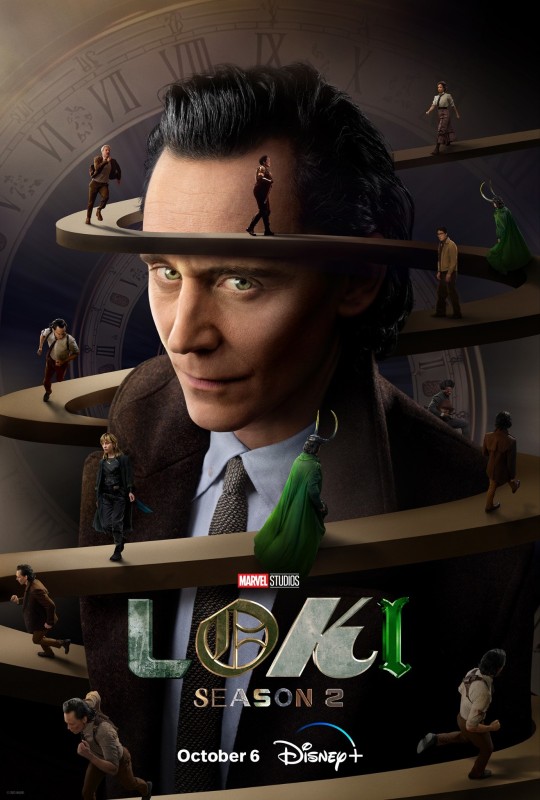
I don't have much to say about Loki other than I loved the final episode, Natalie Holt deserves some kind of award for her music and it makes me cry.
6. One Piece (Live Action) - 6.5/10
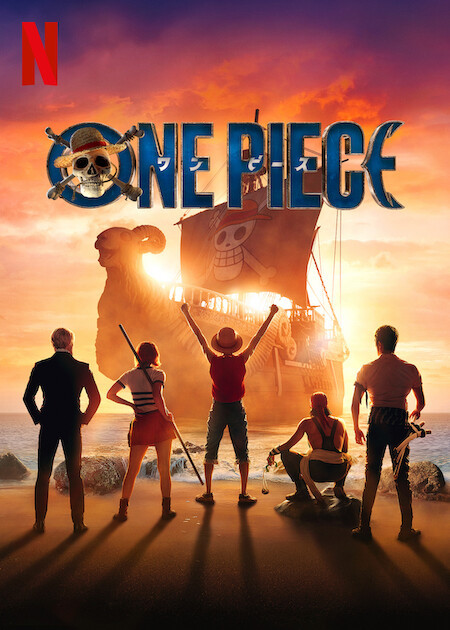
As everyone has already said, this should not have worked. I didn't have much faith in it, but I chose to watch it anyway. And I'm glad I did.
Though there were moments of stiff acting and/or line delivery, I still like it overall.
Though I still liked Roger's anime death more than here.
5. My Beautiful Man/Utsukushii kare (Season 2) - 7/10
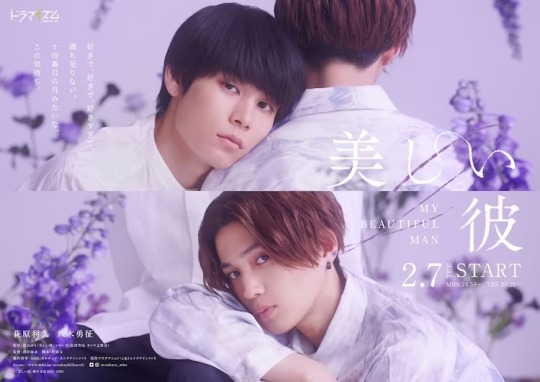
I don't remember much considering I watched this months ago. But I do recall wanting and waiting for this for a WHILE. I was not disappointed and Utsukushii Kare stands as my favorite BL series. Minato's Laundromat would've been on the list, but it failed me, Utsukushii Kare hasn't. So yeah.
4. Jack O' Frost (2023) - 6/10
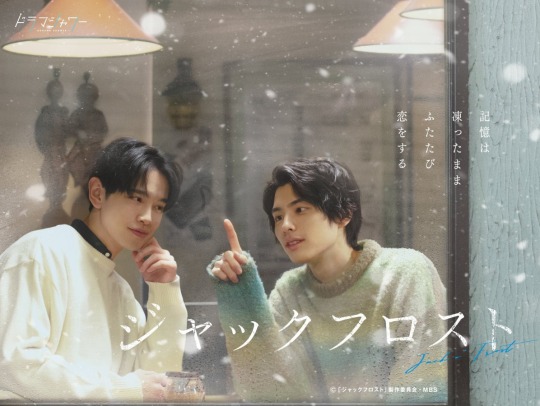
I have issues with the whole "an MC has amnesia" plot and considering this has happened 3 times in the same year is crazy to me.
But do recall I Fucking LOVE the music! OOOOHHHH, Shit! I love it. As soon as "Winter Days" started playing during episode 2 or 3, I immediately started looking for the soundtrack.
I also have yet another celebrity crush in Kyoya Honda.
3. Taira no Kiyomori - 8/10
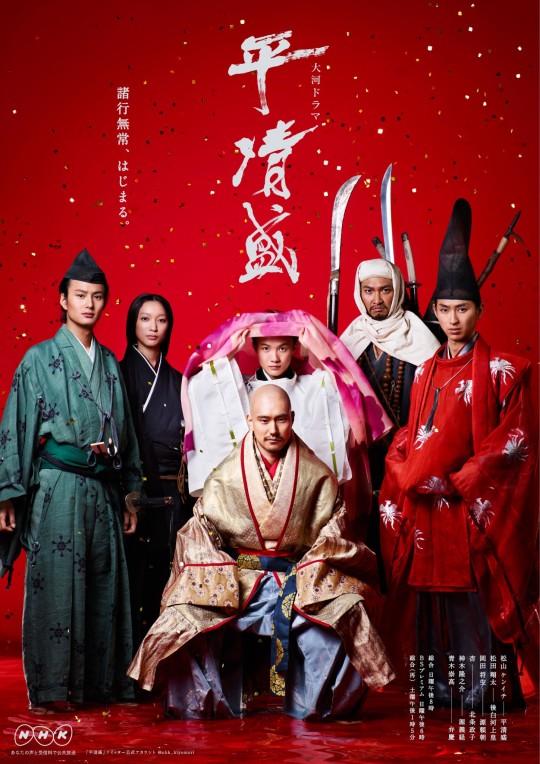
This is unfair given the fact I started this last year and left for a month, making me finish this in January or February. But I still finished in 2023, so it counts!
As per my previous review, I was fucking bored with the first 6 to 9 episodes. After them, however, I loved this show. I love the music, I love the characters, and I like some of the comedy. There are so many great moments that I absolutely love.
Despite knowing how it ended, historically, I was still upset at the characters' deaths.
2. More Than Words (2022) - 6/10

I heard this was a Japanese BL, my favorite type of BL, and I guess. But as others have said, it's mostly about the relationship between Makio and Mieko. Though perhaps not for the second part of the story...
Anyway, I loved this show. It fucked me up, but I did stay up all night till 12 or 1 am to finish it, and I couldn't stop thinking about it for a month. So yeah, despite the score, I am putting it up here.
1. Kamakura dono no 13 nin/13 Lords of the Shogun - 7/10

HERE COMES THE MAIN MAN HIMSELF, KŌKI MITANI!
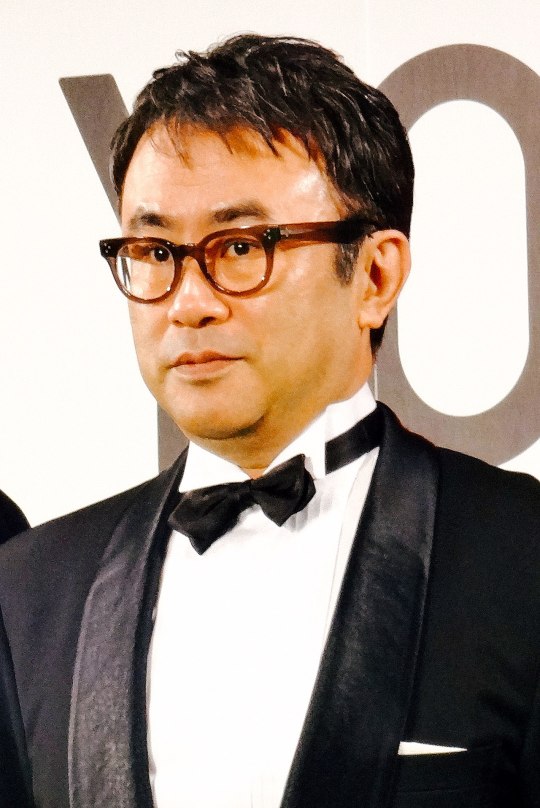
The main man himself, the man who wrote my favorite Taiga Drama, SANADA MARU! No wonder I was fucking addicted to this show. For first time in A WHILE I watched and finished this entire show in a week.
I was drawn into this show by the fucking neck. I just was.
I remember seeing You Oizumi as Minamoto no Yoritomo and thinking, "Nah." I couldn't get behind him, I simply didn't see it at first. Then he died and literally episodes later, I was missing this man.
All my favorite characters died. ALL! And since I don't know much about the Heian nor Kamakura period, I was taken out. Fucking Kazusa, dead; Minamoto no Yoshinaka, I knew this was so it's my fault, but dead; fucking Wada Yoshimori, I fucking loved him, and I didn't know it! DEAD!
They killed my pathetic twink, Minamoto no Sanetomo. And he was gay! FUCK! I was heavily upset.
And the fact that it ends with Yoshitoko's death via his sister not giving him his medicine and watching him die! Gods dammmmmnnn!
Kōki Mitani you heavenly fucker! Ah!
I also love the music, one of my favorites Taiga drama themes.
Now, that wasn't all I watched, but simply all I felt should be on the list. I refuse to put ten shows up here if I don't care enough for them.
Here's to another year.

#Top ten... I guess#Not really#Top Shows of 2023#Kōki mitani#Koki mitani#Kamakura dono no 13 nin#13 lords of the Shogun#more than words#loki season 2#Taira no Kiyomori#jack o' frost#utsukushii kare#one piece live action#Spotify
8 notes
·
View notes
Photo


Kiyomori and Da Ji’s dialogue when they encounter each other in Warriors Orochi 3. I sense some bad blood between them...
#kiyomori taira#da ji#warriors orochi 3#koei tecmo#ps4#ps3#warriors orochi#orochi musou#musou orochi
6 notes
·
View notes
Text
I'm reading a summary of Heike Monogatari and I can't help but feel like it's very Macbeth. I'm getting big Macbeth vibes.
#heike monogatari#taira no kiyomori being the macbeth type character#im not saying they are related in any means just that the story of a war and succession and the wicked meeting their own downfall and demise#mixed with supernatural elements of being taunted by ghosts#i love macbeth so its just me making connections
0 notes
Photo

Actor Nakamura Utaemon of Edo as Taira no Kiyomori in “New” Kaomise at the Naka Theatre, by Utagawa Toyokuni I, late 18th-early 19th century.
186 notes
·
View notes
Text




Roundup-catch up: September 2024 (〜Take me back to the Reiwa era arc〜)
After a rather all consuming and intense reading experience that took me 60 years back in time (I will get to that one another time) I wanted to get back to the present time, specifically 2020 to today, and explore what's new and buzzing in the manga landscape. Luckily had a couple titles sitting unread ready to give me the most productive reading week I've had so far this year.
Akari by Marco Kohinata is a work I don't want to go too in detail about because I think it's one that I think is better by just diving straight in so I want to describe a bit what it does artistically. Even before it became the norm to produce manga manuscripts fully digitally with programs like Clip Studio there's always been manga artists who challenge the "correct" way of how manga manuscripts should look with clean inked lines and nothing but screentone or crosshatching to add dimension. Like Taiyo Matsumoto, Hiroaki Samura, and Q Hayashida just to mention a few. But with the digital way of doing it becoming the norm and thus there being less time consuming and high risk ways to experiment with the expected form of a manga manuscript the diversity of artistic expression in manga is expanding. All the manga in this post have an expression to them only really possible to do in a digital medium or if analogue, made possible by the innovations of digital artists. Akari has a sort of charcoal texture to it that I haven't seen any other manga artist use giving it a really illustrative look that really elevates the emotional themes of familial estrangement and being at risk of falling to the margins of society that the work depicts. Its made me really look forward to seeing what the "average" manga manuscript might look like by 2030.
Last year I gushed a bit about the cutesy gag manga Yoko to Tora by Fuyuko Kurosaki which really charmed me with its truly adorable art, little world building touches and anything goes absurdist comedy. This mini project finally got me to pick up Heike Monogatari Yoru-kun no Hanashi. This anachronistic time slipped retelling of the tale of the arrogant Taira samurai clan and its conflict with the Minamoto clan backed by imperial interests. Recently orphaned Yoru-kun has spent most of his life with the spoiled but lonely rich girl Sara. But one day, he is suddenly kidnapped from our time to the Heian era by Taira no Kiyomori! (portrayed as a flashy rock star super villain obsessed with his wife) to play the role of his daughter in a grand scheme to marry the Taira clan into the imperial family. Yoru now finds himself living at the whims of his war mongering and arrogant new father, but at the same time finds himself sympathetic and invested in his new family. Because they aren't all that bad. Right? But what about Sara? She's not going to let Yoru be all alone in this strange story, right? The Heike story is retold with a maximalist, deeply anachronistic and absurd fashion by, I will already declare, one of my favorite contemporary manga artists.
There's clearly a "gender bending" aspect to have these characters take the roles of historical figures of the "opposite" gender but the role assignment is as far as that went. The only new item of clothing that gendered Yoru was a kimono overcoat worn over his school uniform while Sara was only gendered by a piece of armour worn on top of hers. And of course Yoru can have a baby, you can just go pick those up anywhere. Like, at the cabbage patch. Intentionally or not it becomes a farcical commentary on how gender is assigned upon you by others.
A lot of current manga are in some way colored by the pandemic and 2020 COVID lockdown era. After Shinzo Keigo was hospitalized from COVID complications he produced Hirayasumi. But his wife Natsuko Taniguchi was obviously affected by this time in world history and her personal life as well and produced her own manga in response to it. Fukiyose Residence introduces us to the flashy gal cashier at a non-franchise conbini. She talks loud, sits on a camping chair behind the register but her high spirits brings as much joy as annoyance to her customers. But her public self and private self couldn't be more different, which her neighbours in her apartment building learn one by one. A short but very sweet story about actually finding connection with those closest to you and the ways we transform ourselves through and for others.
Sometimes I don't do my due dilligence and check if I can get a title I'm eyeing in Japanese in english, but to be fair that overlap is just so rare that I lost the habit. But here I made a mistake, because last week Astro Biologist Pratess by Sarami got a translated omnibus release by Alien Press. That particular edition is not what I will review T^T but it's def one to check out. A classic coming of age during summer vacation with past lives from outer space a la Please Save My Earth and astral connections to an alien astro biologist brings 3 friends closer as they try to figure out exactly what they want from life. This is one I wish was just 1 or 2 volumes longer so all 3 characters got to be fully fleshed out but I enjoyed what we got and it made me feel even more excited about what manga is waiting for us in the near future. The work was also licensed in Spanish so if that's your preferred way to read do check it out!
34 notes
·
View notes
Photo

Genpei War
The Genpei War (1180-1185 CE), also known as the Taira-Minamoto War, was a conflict in Japan principally between two rival clans: the Minamoto and Taira, for control of the imperial throne. The civil war was punctuated by a typhoon, earthquake, famine and a plague but was finally ended at the decisive Battle of Dannoura when the defeated leader of the Taira, Tomomori, and the claimant to the throne Antoku, both committed suicide. In the aftermath of the war, the Kamakura Shogunate was established by Minamoto no Yoritomo and the military would go on to dominate Japanese government for centuries to come.
Background
The Genpei War (Genpei No Soran) was a civil war for dynastic control in Japan between two powerful clan groups who each claimed a rightful inheritance to the imperial throne. From the 9th century CE, the process known as 'dynastic shedding' removed individuals from the dynastic lineage because the royal family became too large and too costly to maintain. With emperors having as many as 50 children, even direct descendants were removed from the royal line and given one of two family names: Minamoto (aka Minamoto-Shi or Genji) or Taira (aka Hei-Shi or Heike). Both groups were militarily powerful and a bitter rivalry developed between them. The aristocracy at court depended on one of the families according to their particular allegiance.
Almost inevitably, armed conflict broke out between these rivals, notably in the 1156 CE Hogen Disturbance when the two sides claimed the throne vacated by the death of retired emperor Toba. The retired emperor Sutoku was supported by Tameyoshi, head of the Minamoto and some factions of the powerful Fujiwara clan led by Yorinaga. Meanwhile, the then emperor Go-Shirakawa was supported by Tameyoshi's eldest son, who joined with the Taira and other members of the Fujiwara, led by Tadamichi, Yorinaga's brother. The Go-Shirakawa side, with help from the military commander Taira no Kiyomori, quashed the rebellion, and Tameyoshi was executed.
1160 CE saw another outbreak in clan hostilities with the Heiji Disturbance. Minamoto no Yoshitomo, jealous at the rewards and prestige won by Taira no Kiyomori following the Hogen Disturbance, seized the throne in 1159 CE while his rival was away from court. Taira no Kiyomori swiftly returned to restore order and Yoshimoto was killed. Two rebellions and twice the Taira clan had prevailed so that they were now the most powerful family in Japan. For the Minamoto, though, it would be third time lucky.
Taira no Kiyomori enjoyed even greater rewards now that he had quashed two 'disturbances' to the status quo and he was made Grand minister of state (daijo daijin) in 1167 CE. From then on, though, Kiyomori began to lose important allies, notably his old supporter the emperor Go-Shirakawa, now retired, who plotted to assassinate Kiyomori in 1177 CE following his attempt to promote a Taira prince. Trouble was, once again, brewing at court. A failed attempt by Kiyomori to move the court from Kyoto to Kobe was followed in 1180 CE by him audaciously putting his grandson Antoku, a mere two-year-old, on the throne at Kyoto. Antoku was the son of Emperor Takakura and his wife was Kiyomori's daughter. At this, the Minamoto had had enough, and with the support of Mochito, the son of ex-emperor Go-Shirakawa, civil war broke out.
Continue reading...
24 notes
·
View notes
Text

GENJI CLAN some of them anyway (some designs except canon ones) might change with time (or when fgo releases them........... hurry it up nasu....)
For clarifications:
Tokiwa Gozen - ONLY Yoshitsune's mother (some sources indicate her dying at 42 and some mention her living at least until 48 years and no confirmed year of death), Yoshitomo's favorite concubine, mother of Yoshitomo's last 3 children
Yoshitomo - Yoshitsune, Yoritomo and Noriyori's father
The design choice for making Tokiwa look so much like Yoshitsune is based on the fact that in Heian-Kyo it was established that Yoshitsune looks exactly like Tokiwa via Yoshitsune's memory of words Taira no Kiyomori said to her as a child
Yoritomo - Yoshitomo's third son and Yoshitsune' and Noriyori's older half-brother
Noriyori - Yoshitomo's sixth son, Yoritomo's younger half-brother and Yoshitsune's older half-brother
Yoshinaka - Yoshitsune, Yoritomo and Noriyori's cousin
#my art#fate grand order#minamoto no yoshitsune#tokiwa gozen#minamoto no yoshitomo#minamoto no yoritomo#minamoto no noriyori#minamoto no yoshinaka#fsr spoilers#rogue saber#rogue saber identity#samurai remnant spoilers
57 notes
·
View notes
Photo
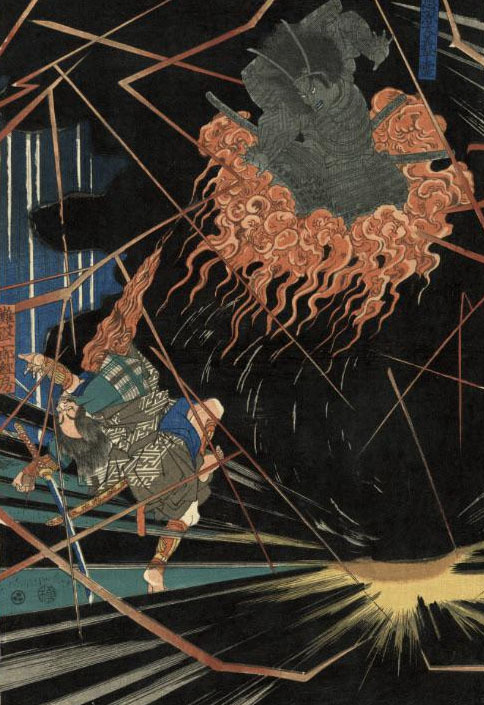
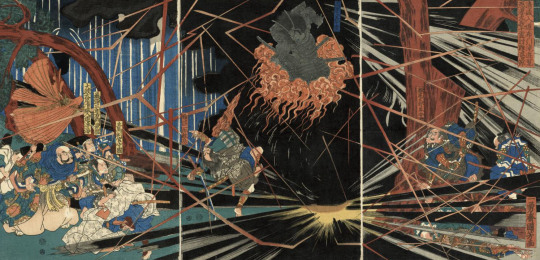
Utagawa Kuniyoshi - Taira no Kiyomori encountering the ghost of Akugenta Yoshihira at the Nunobiki Falls c.1825
272 notes
·
View notes
Text


Sho Sakurai goes to the romantic Miyajima Island on a two-day, one-night school trip with Shinichi Hatori, Eiji Kotoge, and Takashi Yoshimura on the "1 Oku 3000 Mannin no SHOW Channel" special
"The Nippon Television" variety show "1 Oku 3000 Mannin no SHOW Channel" "Adult Social Studies Field Trip SP", featuring Arashi's Sakurai Sho, announcer Hatori Shinichi, Biking's Kotoge Eiji, and "Heisei Nobushi kobushi'"s Yoshimura Takashi, will be broadcast from 14:35 p.m. to 16.00 p.m. on japanese time and on 6.35.-8.00 a.m. on european time 27.10.2024. This time, they will go on a two-day, one-night trip around Hiroshima and Hyogo.
Miyajima in Aki, home to the World Heritage Site Itsukushima Shrine, is a popular tourist destination visited by approximately 4.65 million tourists annually. It is counted among Japan's Three Most Scenic Views alongside Matsushima (Miyagi) and Amanohashidate (Kyoto), but we embark on a journey to discover why Miyajima was chosen as one of Japan's Three Most Scenic Views and why Itsukushima Shrine was built on the sea.
Arriving on Miyajima by ferry from the mainland, Sakurai and his friends are astonished to discover that, although the island is inhabited, there is absolutely no "that" on the island. What is that "that" that does not exist on Miyajima, which is known as the "island of the gods"? Having suddenly come into contact with the mysteries of Miyajima, Sakurai and his friends learn about the unknown relationship between Miyajima and Taira no Kiyomori, and the secret hidden in the large torii gate that stands on the sea, as they walk along the approach to the island with historical writer Kawai.
The shrine building style of Itsukushima Shrine, which incorporates the Shinden-zukuri style of the Heian period, is one with the sea and the mountains, boasting an unparalleled beauty. When you look around with your back to the worship hall, you will see a mysterious sight. Yoshimura, a history lover, is excited to learn the reason why Miyajima was chosen as one of the Three Most Scenic Views of Japan, and the romantic untold story behind it.
Afterwards, they will enjoy the trip atmosphere by eating local gourmet food at the Omotesando shopping arcade in Miyajima and making their own original rice scoops. They will also enjoy piping hot conger eel rice at a famous conger eel restaurant that is frequented by many celebrities.
After filling their stomachs, they head to Mount Misen, which towers behind Itsukushima Shrine. It is said that if they reach the top of the mountain, they will understand why Miyajima is called the "Island of the Gods." They take a ropeway to the middle of the mountain, and then walk for 30 minutes to the top. After seeing some amazing sights and finally relaxing in the hot springs of a long-established inn, Sakurai and his friends head to their next destination, Kobe.
The second day of the trip starts in Kobe. They elegantly enjoy the "world's best breakfast," created by a French master and said to have captivated the French president and Hollywood actors. After a luxurious morning, they head to their destination, Kawasaki World. It is an experiential museum where you can "see, touch, and learn" about the products created by the Kawasaki Heavy Industries Group, well known for its Kawasaki motorcycles. Kotoge, a motorcycle enthusiast who had been bossed around by the history-loving members up until now, is excited to see it.
The predecessor of Kawasaki Heavy Industries was a shipyard established in 1878 (Meiji 11) by Kawasaki Shozo, known as the king of shipbuilding. How did Kawasaki Heavy Industries, which was originally a shipbuilding company, become famous for motorcycles? Learn about the surprising history of the company, which not only made ships and motorcycles, but also made everyday items that everyone uses at home and Japan's first ○○, as well as its incredible achievements in Europe.
The company that Kawasaki Heavy Industries is currently focusing on is "that business" that is attracting attention as the next generation of energy. Learn about Kawasaki's amazing technology, which is a world first and has an eye on the future.
#Sakurai Sho#櫻井翔#Arashi#嵐#Hatori Shinichi#Kotoge Eiji#Yoshimura Takashi#Heisei Nobushi Kobushi#1 Oku 3000 Mannin No SHOW Channel#Japanese Entertainment Programme#Nippon TV
8 notes
·
View notes
Text
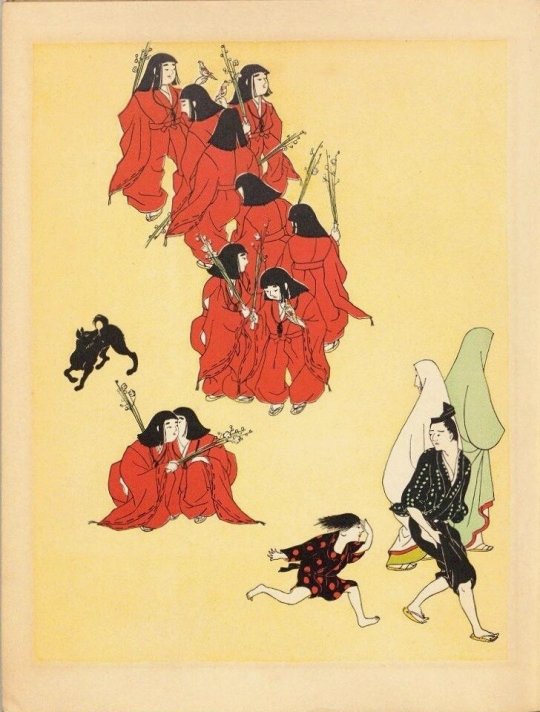
Red hitatare(Kamuro wears) - Genji and Heike Edited by Kusuyama Masao, illustrated by Settai Komura, 1925.
Kamuro (bald) group of mainly 14-15 year-old children in red costumes and with a bald head, mainly children with no relatives, active in the Heian period, about 1,200 years ago… The idea was originated by Taira no Kiyomori. Operation Spy in the Heian period. A group of spies released on the streets of Kyoto to expose anyone who speaks ill of the current regime of the Heike clan.
赤い直垂 - 源氏と平家 楠山正雄 編 小村雪岱 絵 1925
15 notes
·
View notes
Text
House of the Dragon Taira
House of the Dragon Trailer Music fits well with the Japanese period drama, Taira no Kiyomori (2012), which is about Genpei War.
#taira no kiyomori#taira#heike#genpei war#minamoto#genji#the tale of the heike#heian period#japan#jidaigeki#period drama#samurai#taiga drama#historical drama#shirabyoshi#japanese culture
4 notes
·
View notes
Text

Utagawa Hiroshige
Snow Landscape with Skull Shapes, left sheet of the triptych Taira Kiyomori Haunted by Strange Sights (Taira Kiyomori kaii o miru zu)
1845
#utagawa hiroshige#woodcut#japanese woodblock print#japanese art#art history#japanese prints#japanese aesthetic#tumblrstyle#tumblrpost#tumblrpic#tumblr love#tumblr art
38 notes
·
View notes
Note
NEW HEIMDALLR!!!!!!!!!!!!!!!!
tumblr ate my response to this ask <///3 anyway YA '!!!! FOR HALLOWEEN !!! it's from the page where he is/is possessed by the ghost of taira no kiyomori 👍

#fun fact this is the only page digital + translated from the very last two vols of maloki i've seen#the scanlator never uploaded the whole thing because it sucked so fucking bad#it also sucked like specifically for heimdallr too <///3#fish.answers#jordan tag#maloki
4 notes
·
View notes